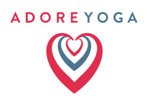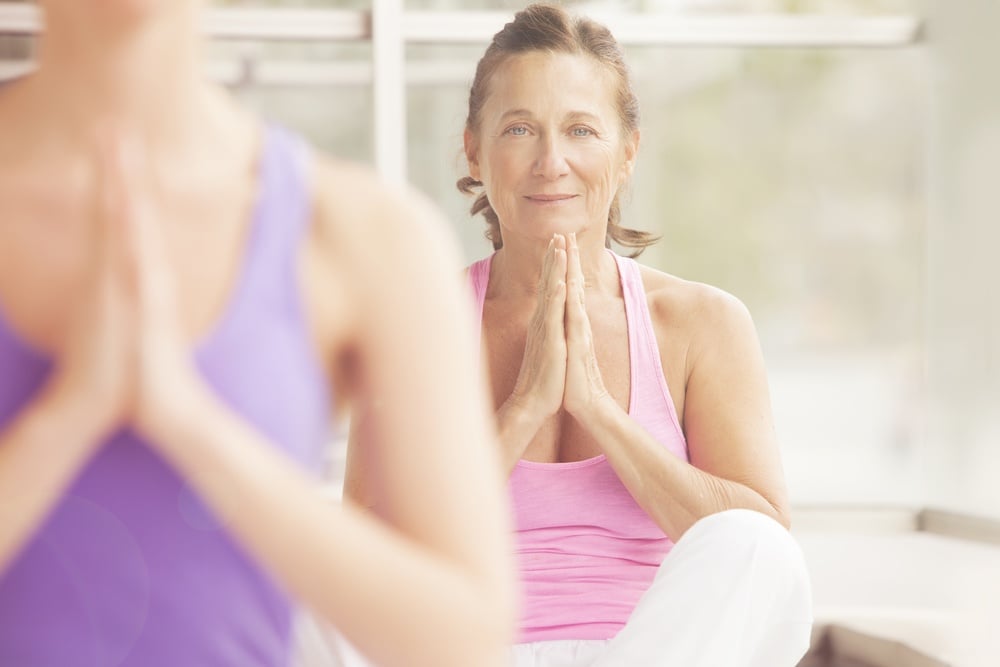I received an email recently from a woman called Michelle asking if yoga could help her with insomnia. When I called her to explain how yoga can help manage sleep disorders, she replied “That's great! I've got a couple of kilos to lose and then I’ll sign up.”
Happily, I managed to persuade Michelle that fitness levels and body weight have nothing to do with being able to practice yoga and she started enjoying the benefits of yoga straight away. Michelle is not alone in thinking that yoga is only for fit, slim, bendy people – that’s certainly how it often appears in the media. One of the problems with media images of super flexible yogis doing advanced poses is that many people think “I’ll try yoga when I’m thinner/fitter” or even worse, “yoga’s not for me”.
Yoga IS for you. It’s for everybody. It was never, EVER meant to be a way of making (or showing off) the body beautiful. And, do you want to know a secret? Those beautiful bendy people in the photos were born that way. The hyper mobility, long legs, and glowing skin owe as much to genetics as to yogic attainment. That isn’t to say they don’t work long and hard to look that way. But, in the same way a crash diet and a make-over won’t make me look like an super model, a diligent yoga practice won’t make you look like a yoga model (yes, that’s an actual job description). And you certainly don’t have to be bendy and beautiful to do yoga.
Even when I do manage to persuade people that they can do yoga, despite being convinced that they're too old or big or inflexible, how confident do you think they feel about walking into their first yoga class? Many people worry that everybody else be thinner, fitter and younger. They're convinced they'll be the only ones who can’t touch their toes and keep up with the rest of the class.
The combination of idealised images in the media and the popularity of large group-fitness style classes makes yoga an intimidating prospect for many people. People like Michelle who would experience enormous benefits from a regular practice. So I developed a yoga class, Yoga for All, especially for people who thought they couldn’t, or shouldn’t, do yoga. Here's what we do differently in our Yoga for All classes to make yoga accessible to everyone:
1. Create a Safe Space
A big room filled with 30 or more people doing flow yoga does not seem like a safe space to many prospective students. Keeping numbers small is a good way to make the class feel more approachable. Creating a warm welcome is also important - our teachers are always available at the start of each class to greet students and put them at ease. It's helpful to have a yoga room that's easy to get to, with a well lit entry way, wide doors to ensure accessibility and few or no steps.
2. Be clear about who the class is for
While general yoga classes can be adapted to meet the needs of different students, this isn't enough when offering classes for people who consider themselves outside of the yoga 'norm'. It's a good idea to make it clear in any promotional material that the sessions are especially designed for people of all ages, body sizes, abilities, genders and background. This clarification offers reassurance that students' individual needs will be considered and they won't be expected to keep up with cookie-cutter yoga students busting out moves like Instagram yoga-lebrities.
3. Dress Code
Not everybody feels good in patterned, skin tight yoga pants. It's reassuring to discover that you don't need any special clothes to do yoga - anything comfortable will do. It's also reassuring to know that you won't be asked to do anything that you couldn't accomplish in regular comfy clothes. At Adore Yoga, we send all our new students a welcome message that lets them know they can wear whatever they feel comfortable moving around in.
4. Teach REAL Yoga
Just because a class is designed to make yoga accessible to people of all ages and abilities, it doesn't mean the quality of the yoga is diminished. Yoga for All classes should provide authentic yoga practices, including movement, static postures, balances, pranayama (breathing exercises) and meditation. These classes are not about using asana to help people get in shape. They're about offering the mind-body tools to help students experience the benefits of yoga, which reach far beyond physical fitness.
5. Make it Do-able
If students can’t stand up for very long (or can’t get down on to the floor), make sure chairs are available. If students have trouble balancing, make sure they are next to a wall. Teachers should make it clear that students can choose not to do anything that doesn't feel good - no pressure. Choreographed flowing vinyasa (the type of yoga that moves seamlessly from pose to pose) is not the best way to practice for many people who do not already have lithe bodies. Instead, gentle movements that move back and forth between two simple positions (such as moving in and out of Warrior 1, with whatever arm adaptations are appropriate) is helpful for building strength, flexibility, confidence, rhythm and learning to combine breath and movement.
6. Beginner students need experienced teachers
While many new yoga teachers cut their teeth on 'beginners' classes, I firmly believe that new students and those who don't fit the 'young and bendy' stereotype (that's most of us at Adore Yoga) are best served by experienced teachers who not only provide expert tuition, but bring empathy and life experience into the yoga room.
7. Teachers who understand diversity
Even experienced teachers can be flummoxed by a body that won't co-operate with the usual yoga instructions and modifications. For a teacher to successfully work with students of all shapes, sizes, ages and abilities, it's important that they look beyond trying to remediate physiological challenges with adapted yoga postures. A strong understanding of diversity and a sensitivity to (not sympathy for) the lived experience of students with different life histories and body experiences is vital. Remember, you're not trying to fix your students, your supporting them to experience the benefits of yoga according to their own individual needs.
When you pay attention to the way a class is set up, promoted and taught, it's possible to embrace students who had always thought that yoga wasn't for them. Even if you think the classes you teach are for 'all levels', take another look at your lesson plans, adaptations and the way your classes are marketed. Do they really look appealing and do-able to people who are very differently bodied or abled to you?
I hope you're feeling inspired to think about how you make your classes accessible to all students - you could be making a big difference to the lives of many people who might not have tried yoga without your thoughtful approach.

